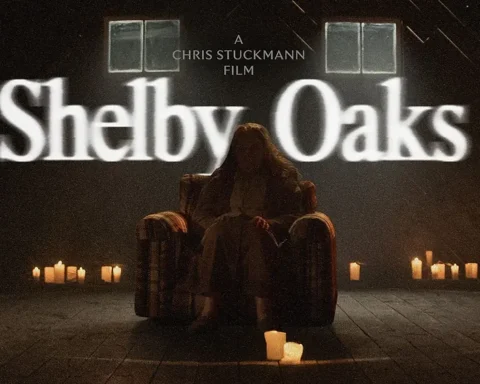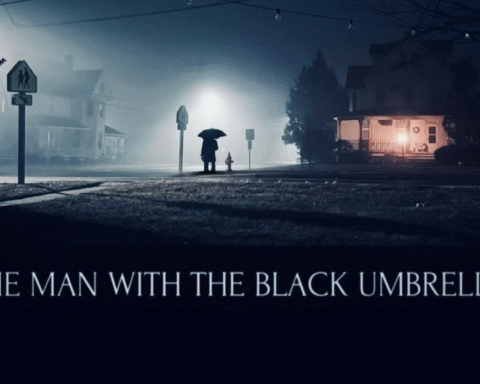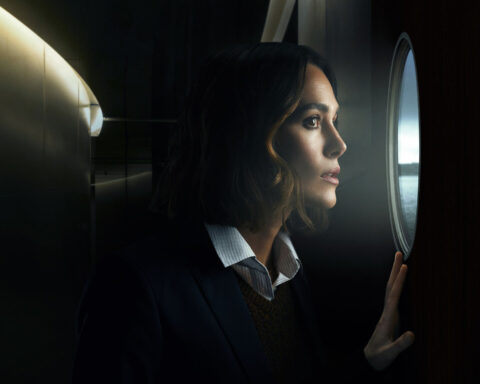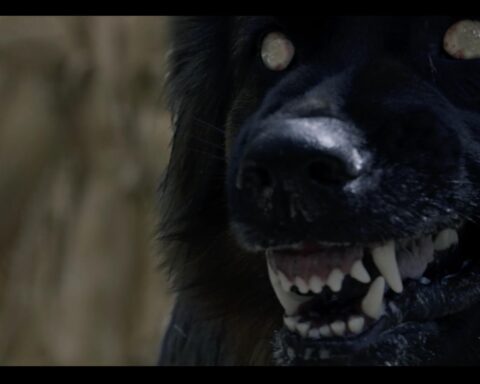After the instructive and chaotic viewing of “The Hole” directed by Joe Dante in 2009, offered in 3D in equipped theaters, I came to the ultimate conclusion that a debriefing was necessary.
The film comes with an interesting, even very enticing, promotional package: a catchy trailer, a mysterious and truly captivating poster, and a more than attractive pitch. And this is nothing compared to the big name behind it: Joe Dante. One of the masters of horror, a pioneer who has served up gems in the genre throughout his career like “Piranha,” “Gremlins,” and “The Twilight Zone.” A visionary in the genre, therefore, who has more than a few tricks up his sleeve when it comes to suspenseful cinema (specifically), and who managed to bring on board some notable tools for this feature film: Mark L. Smith for the screenplay (with few titles to his credit but still, the two volumes of “Motel,” lacking in quality in terms of direction but rich in meaning strictly at the screenplay level) and Theo Van de Sande for cinematography, who has prestigious titles and long-recognized talent to his credit: “Cruel Intentions,” “Wayne’s World,” “Grown Ups,” and even the challenging exercise: “Volcano.” Let’s be clear, Joe Dante is no novice in cinema and is no lightweight in the genre: “The Hole” 2009 edition (not to be confused with the 2001 film “The Hole,” though also a fine success) promises glorious aspects and is armed with a host of striking assets.
Of course, and if this were not the case, this article would never have been titled “Debriefing,” the overall assessment is a bit less glorious but not catastrophic either. Let me explain, from beginning to end and from top to bottom
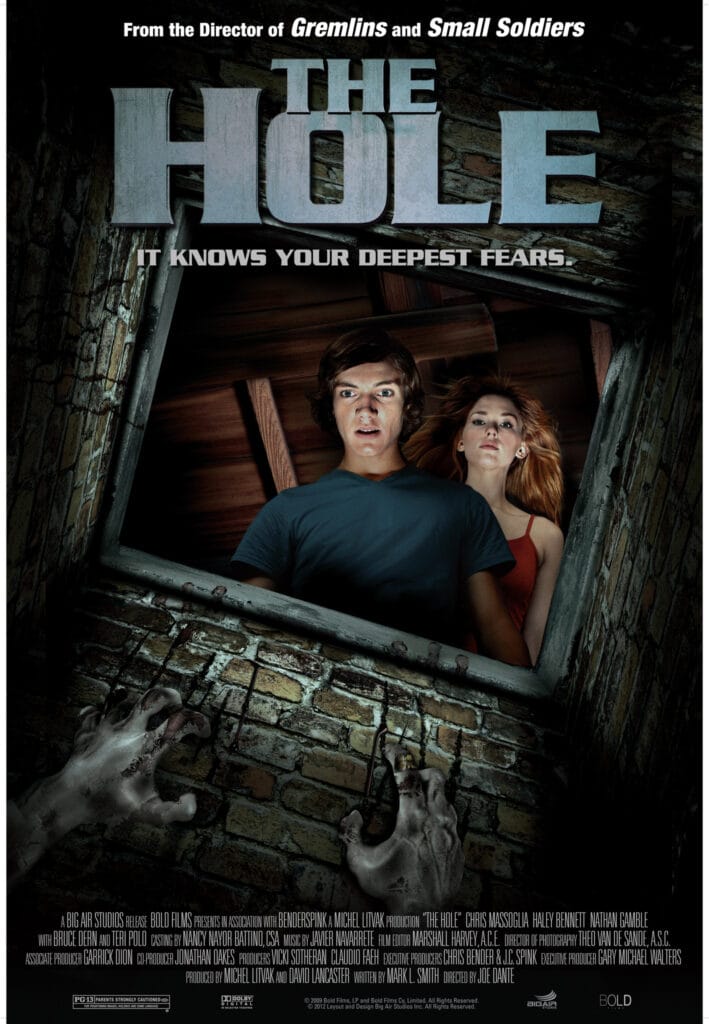
THE POSTER DECRYPTED
At first glance, it’s a very “Dantesque” poster that we’re presented with. The title faces us in electric blue, in a fairly retro font that feels familiar and is reminiscent of the impact of the “Piranha” font in 1978. The texture and photography of the image also reveal a potentially Dantesque style, with a powerful light spot falling on a rotted wooden trapdoor, chained and padlocked, all highly contrasted and slightly overexposed. In the background, a setting that closely resembles a basement (hint: staircase) with an unwelcoming appearance looms. Above this is the tagline, which also doesn’t fail to catch the eye and curiosity of a potential viewer: “What are you afraid of?” A poster that works, then, and truly piques interest. Finally, at the very top of the poster, we can discover the names of the four main actors: Chris Massoglia (a newbie who starred in “The Vampire’s Assistant”), Haley Bennett (who now has some very good films to her credit: “Marley & Me,” “Kaboom,” “Music & Lyrics,” and “Arcadia Lost” where she plays the role of Charlotte), Nathan Gamble (seen in “Babel,” “Marley & Me,” “The Mist,” and “The Dark Knight”), and Teri Polo (“Meet the Parents,” “Beyond Borders,” and “2:13”).
A fine cast, in a way; we concretely expect pleasant surprises and not to be disappointed.

THE PITCH DECRYPTED
“A pair of brothers stumble upon a mysterious hole in their basement that leads to the darkest corridors of their fears and nightmares.”
The pitch of a film may well be the most important element of the “package.” It must convince a potential viewer in just one line and ONLY ONE LINE. Which, in my opinion, is always the greatest challenge of an existence (at least when one is dedicated to cinema). This one, for example, is pretty darn captivating. Let’s all be honest: after seeing the poster and reading the pitch, you want to know… WHAT IS THIS HOLE?
To lead you to this reflection, the creators of the film have used undeniably formidable elements: “Two brothers,” “mysterious hole,” “basement,” “darkest corridor,” “fears and nightmares.” These are the key words of this feature film that guide us towards a thrilling cinematic experience. The hook is set, the bait is cast, are we going to bite?
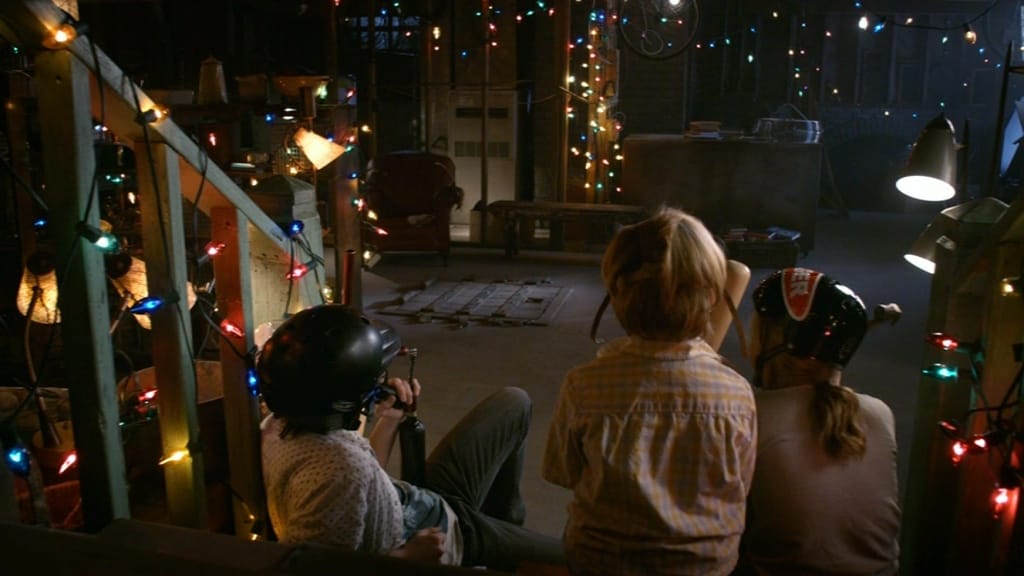
START OF THE SCREENING
Unfortunately, the beginning of the film unfolds in a fairly conventional manner, with a rather bland and classic character introduction, typical of horror films of a similar ilk. We thus discover a family grappling with a fairly predictable crisis: a move, a young boy wanting to have fun, a teenager disturbed by leaving New York, the city, and his friends and finding himself stuck in a town removed from everything, evidently having communication problems with his mother and refusing to infantilize himself with his little brother. Next comes the complicating element: a pretty young girl living next door, Julie, who will obviously appeal to the young man but also interest the younger brother eager for knowledge. Following this, we finally touch on the heart of the matter: the two quarreling brothers accidentally discover a mysterious trapdoor in their basement and decide to open it. Inside, they find a bottomless black hole and, with Julie’s clumsy help, decide to uncover its secrets.
It’s quite banal for a start and yet, the discovery of this hole manages to awaken the viewer’s curiosity (even an experienced one). Eagerly, we continue. But for the sake of viewers who haven’t yet seen the film, I won’t reveal the rest of the story.

THE CHARACTERS
Dane
The typical teenager from horror films: in conflict with his mother, wanting to distance himself from his little brother, eager to woo a girl he finds attractive, seeking refuge in his passion for drawing and in typical teen escapes: MP3 player, computer, bedroom; chaotic and violent relationship with his absent father. Yet, we manage to connect with him despite everything and follow him in this dark story thanks to the coherence of his actions, which we can, for once, relate to.
Julie
Julie is the character I would describe as pivotal; she is only half-active in this story and rather serves as an element of both disturbance and resolution. She acts as a guiding thread, a guide, a companion, and always allows reality to stay connected to the continuity of the plot. An interesting pillar, rarely seen in contemporary films, and quite enjoyable to rediscover.
Lucas
The younger brother is the typical child character. In a horror story, the child is always either the villain or the most sensitive to attacks, making him a key and essential character. It is through Lucas’s perspective that this black hole comes to life and articulates from beginning to end. And if it were up to me to define this film, I would say it is truly a narrow passage between the inherent concept of this hole and its close relationship with the child and his consciousness.
Catherine
The mother character, in a story beginning with family conflict, always remains, for me, accessory, and she is in this story. Set aside from the plot from the start by the two protagonists, Cat’s character will only serve as a hook to the concept of “reality.” Where consciousness and unconsciousness mingle, there must always be a tangible link to bring the viewer back to the coherence of the context, and this is precisely where the mother’s character comes into play. Also, to affirm her omniscient and knowledgeable role, she is the one who can provide informative elements about the lives of the characters and make them malleable.
The Hole
In this film, I want to cite the Hole as a character in its own right, and even if I can’t explicitly explain why for fear of spoiling the pleasure of future viewers, it plays a rather flashy and tumultuous role. Moody, varied, full of resources, this Hole creates a frightening dimension within the film, a sort of parallelism between the basic story and another story that forms between us and the characters. A virulent force that particularly captivated me.
AT THE HEART OF “THE HOLE”

In the end, “The Hole” is a film I would qualify as “Good,” drawing its strengths from strong resources: cinematography, framing, direction, and screenplay, but sometimes losing its intensity in the validation of risky choices: themes, the anchor point, the weakness of the context, the exploitation of clichés unfortunately overused, and the lack of innovation and experimentation. None of this detracts from Dante’s basic idea, which remains enticing from start to finish, and this Hole fascinates, captivates, and quenches the viewers’ thirst.
Regarding the 3D, the effects are interesting and well-placed, and the film even won some awards in this area, which I believe are well-deserved. That said, the 2D version is no less good; on the contrary, it remains full of surprises and captures the sharp mind of the viewer just as well.
In terms of direction (in close collaboration with the framing), Dante is an expert, and it shows. Despite having, evidently, a substantial budget, he can afford significant resources for his film and doesn’t skimp on the refinement of his shots. In the end, we are pleased with the product we’re watching and let ourselves be visually carried by the virtuosity of the framing choices presented to us. The same goes for Van de Sande’s cinematography; we are literally blown away, both in terms of color grading and overall tonal balance, it’s a masterful work, and the darkest scenes are the most savory. However, a small downside with the special effects, which disappointed me a lot, considering the rest of the direction and the resources that were in place.
The script is simple but effective, Mark L. Smith was perfectly aligned with Dante’s vision, and the duo could really work wonders. Each element is in its place, it’s coherent, fluid, a bit of warmth in the dialogues is felt, but nothing more, no excessive fantasy is served up in this dish.
Overall, “The Hole” is a film to be savored and enjoyed, with proper distance, within its context and particularities.
For more insights: A little behind-the-scenes note: Chris Massoglia has shared some of his feelings about the shoot on his website. I can tell you that the young actor (and director of some short films) saw the making of “The Hole” as a pure moment of cinema. I invite you to discover his video interview, which is particularly enriching.

THE FATAL CONCLUSION
Joe Dante certainly has nothing more to prove, and his expertise is undeniable. “The Hole” is an interesting film in the contemporary horror genre, with some good and bad sides, but overall remains a good cinematic experience. The balance between fear, humor, and suspense, which has made Dante famous, is preserved, even though it may be less impactful in this film.
The film’s strength lies in its narrative depth and the underlying themes it explores. While it may not be as iconic as Dante’s previous works, it stands as a testament to his skill in crafting engaging and thought-provoking horror.

